Golden Druidale
In Standford's map of the Isle of Man, 1861, what is now called Druidale is named "Glen Reast" ("Desert Glen") and the steam was the Awin Rheast. Before that it was Eairy Horkell, "Corkill's Shealing." The Manx Scrapbook (Chapter IV, Lezayre), tells a tale of Purr Moar, a giant wild boar that had it's den at the confluence of the Crammag and Druidale rivers where they became the Sulby River. In Henry Cadman's book "Harry Druidale Fisherman from Manxland to England" chapter IV is the "Druidale Fishing Excursion and Bivouac." The river is named as the upper reaches of the Sulby river. Google calls it the Rhennass river, which is very wrong as that flows the other way to join the Neb. Unfortunately the pools in Henry's book where they caught 2lb fish is now beneath the Sulby reservoir.
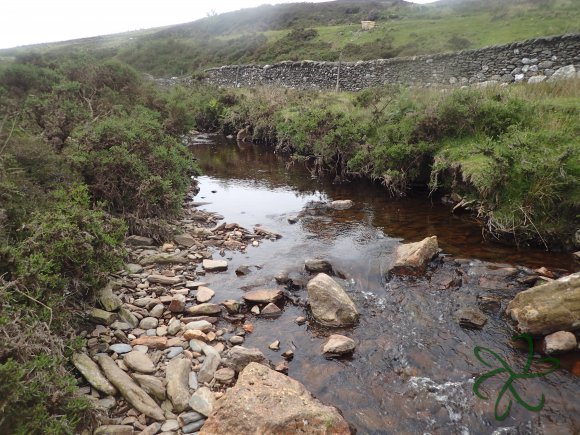
So you see the naming of this river is tricky. I'm going with the Druidale River. Higher up it divides and one way could be the Awin Rheast. I didn't quite get that high. Google is absolutely wrong. This is not the easiest of waters to gleen a fish from. Upstream nymphs and dries are definitely the way to go. Fishing downstream they see you coming and are gone. I decided to try something different this time. When Tenkara Centre UK, sadly, closed it's doors I bought out a lot of their stock. In the deal were a sizable batch of Tenkara flies.
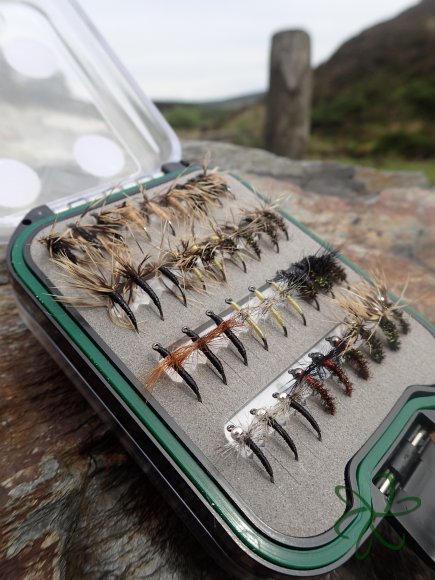
These follow a philosophy of water type, rather than match the hatch. The picture is of the large size flies, about a 12. The top flies are, pretty much traditional wets with partridge hackles an big bodies. Slow sinking turbulent water flies. The next line are the Sakasa Kebari with the hackles pointing forwards. Heavy water with increased action in the legs when the fly is pulsed. Line three have very short stiff hackles. Not exactly dry flies as the hackle will only just keep them afloat for a short while. I think of them more as "damp" flies. They fish in the top inch or so and really "grab" the current when needed. The bottom row have beads for getting down deeper. A modern take on Tenkara patterns. On the other side of this twin sided box as the top 3 rows but in a smaller size. These are a combination of traditional and modern Tenkara flies. I'll write more about the flies and how to use them another time.
The mission was to use only these flies and fish "Tenkara". Use manipulations, placement, and river reading to catch the fish instead of trying to match the hatch. Let's face it, there is not hatch up in Druidale. Nothing lives under the rocks. The fish feed on terrestrials blown in from the heather. A combination of while moths, dung flies, and midges from the stagnant water. Opportunistic and aggressive is how I'd characterise these little fish.
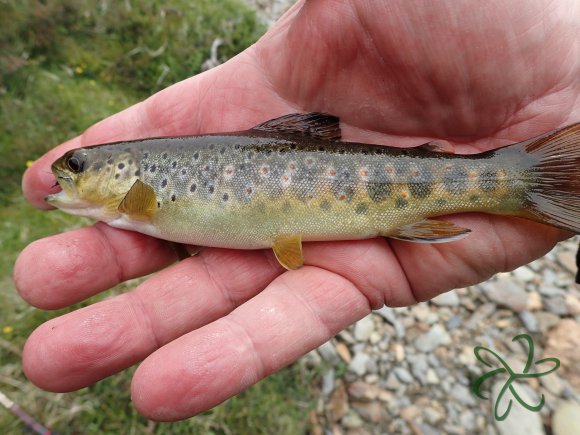
My first is a lovely golden 8 inch fish. I'm using the smaller flies from the collection in the box (Size 14). Black with a peacock body, from the second row. A slight twitch was all that was needed and this little fella grabbed the fly with in a whirlpool of colour.
I work my way up the shallow waters, casting behind each rock and into the dark shadows of banks. Several small fish splash at the fly but don't take a proper hold. I wonder if they are trying to drown the fly before taking it. It's a behaviour I've noted before on these upper waters. Don't strike and wait for the line to extend, that's the ticket! Plenty of fish start to come to the net.
Just before turning the corner to the mud slide, a steep, 20ft bank of mud, there is a lovely pool that always holds fish. On my drive to the car park, looking down from the road above, I had seen the tell tail circles of a rising fish. That's a confidence booster.
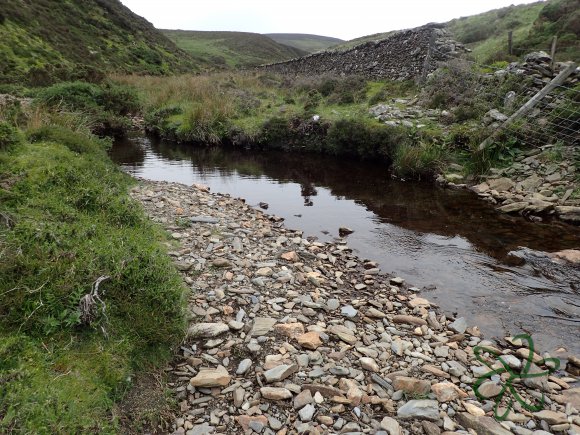
Keeping low and casting into tail of the pool first a splash, dart of the line and a 2 inch trout exited the pool like an inter-continental missile to fly from the hook and splashdown in a deeper hole behind me. Oops. That wasn't part of the plan. Such small fish are not easy to hook. I've swapped to the smallest skinniest, little black fly in the box. Casting carefully, fly first, there is lots of interest in the fly but not solid hookups. That is until I hook cast around the corner to land the fly out of sight.
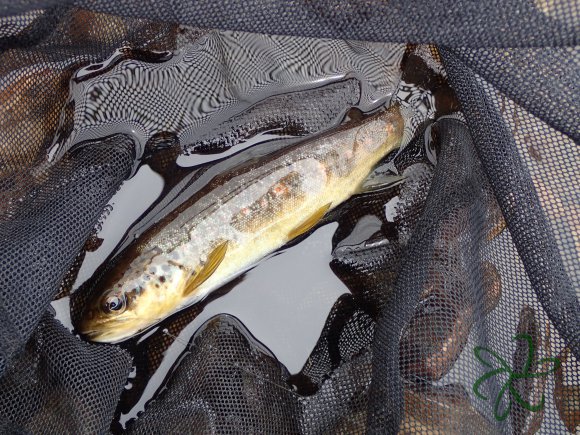
Much darker fish that the first one. Nice size to it as well. The back of the fish is almost black in contrast to the creamy, golden belly. Much few red spots. That was it for the pool. This larger specimen had spook everything else in the pool. Time to move onward. There are plenty more fish to be caught.
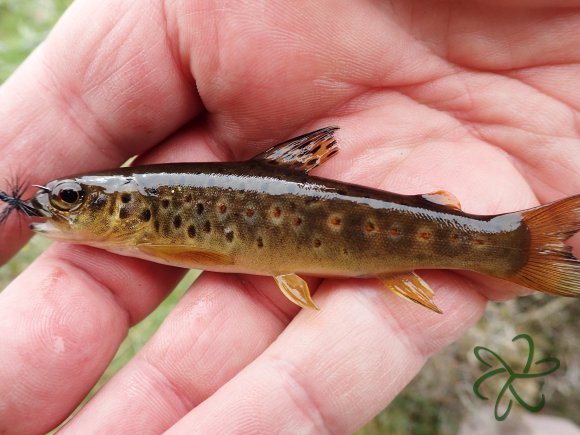
This little one didn't make 4 inches. yet was more than willing to have a go at the fly which was as big as it's mouth. Round the mud slide corner the pools have filled in a little from previous visits. The two deep pools beneath the bank are not what they were and didn't hold a fish. The long glide above had plenty.
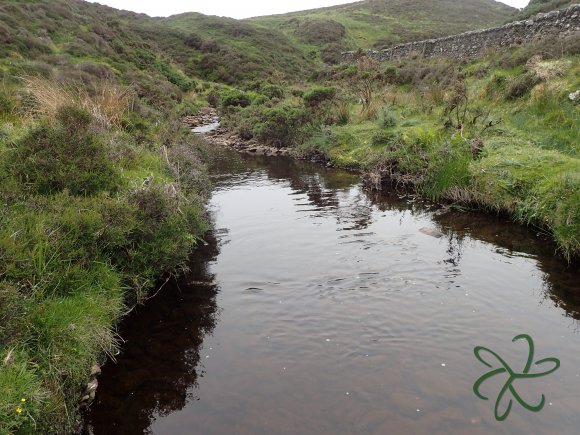
Dapping the fly on the surface with short little skates brought fish after fish from under the banks to cartwheel in the air trying to grab the fly as it lifted off.
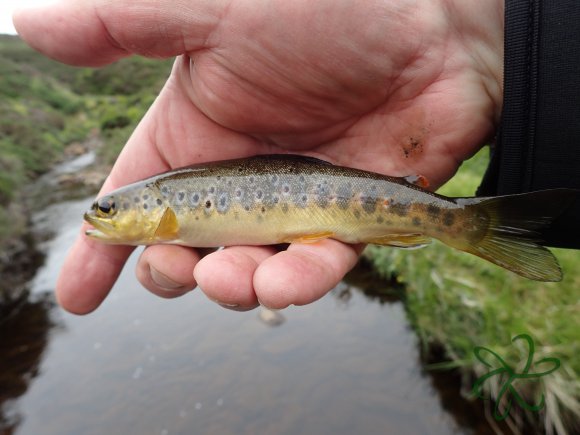
The size of the tail on these fish is a constant source of amazement to me. Enormous, translucent power houses give these fish a fighting ability well above their weight. This is what brings me back to try for these wild fish. What they lack in size they make up for in character and their shear tenaciousness to survive in the harsh conditions.
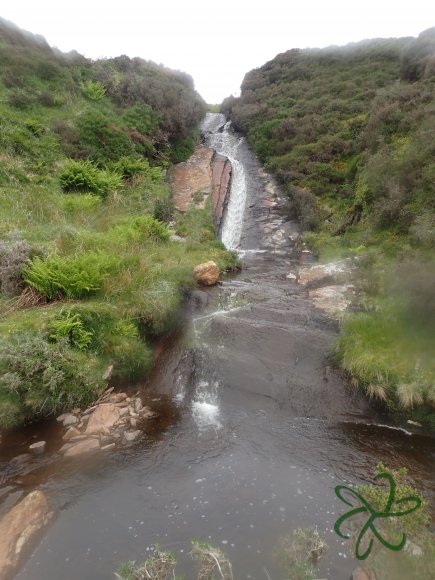
The slab waterfall where a tributary joins the river is usually where I stop, turn round and head back to fish the lower section below the car park. Surprisingly there was no fish in the pool today. I swapped to a fly with a ginger hackle. The dung flies are little more that colour. I know, I wasn't going to match the hatch, but it's hardly that. Perhaps a change would bring more fish. The runs and pools above this point are narrower and shallower again. Fish were not in the same places I found them below the fall.
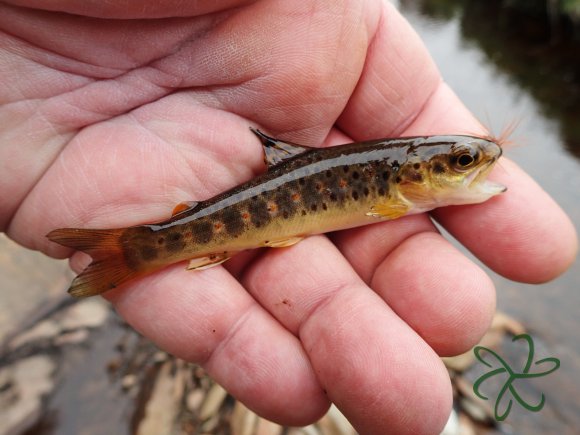
This little one restored my faith that there perhaps were fish higher up. However, they could only be located in the deepest of holes. I suspect that in winter most of this stream freezes or is covered with snow. Only the deepest water will remain viable to support the fish, so that is where they stay.
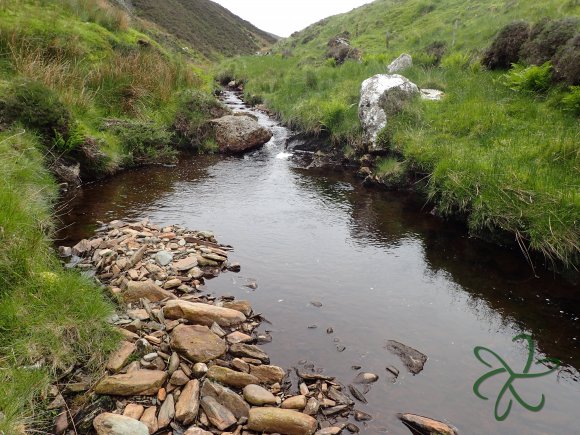
Deeper pools like this did have fish but yet again, as in the previous trip I was getting tired and not getting the fish in the net. It could be that when the fish get scarce I get softer and don't set the hook as well as I might. This might be especially true when the smaller fish are flying at me like golden darts when I do try to set the hook. It's not something I like happening. I had three from the pool above which didn't make it to their camera call.
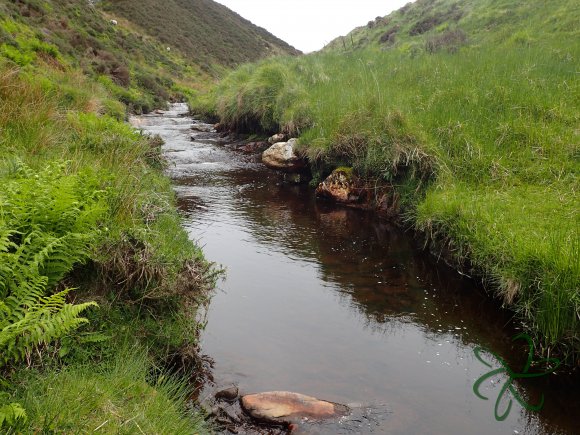
It was a similar story with this deeper pocket. I had a couple of stabs at the fly which I failed to convert. Frustration is definitely an issue when you know you're going to write up the trip later. Above this pool the river has a series of steps and pools. I didn't bring anything to the surface in these pools. Perhaps because they were shallower and didn't have any cover on the bottom of them? Like all fishermen, I've an excuse for nearly every situation when I'm not catching.
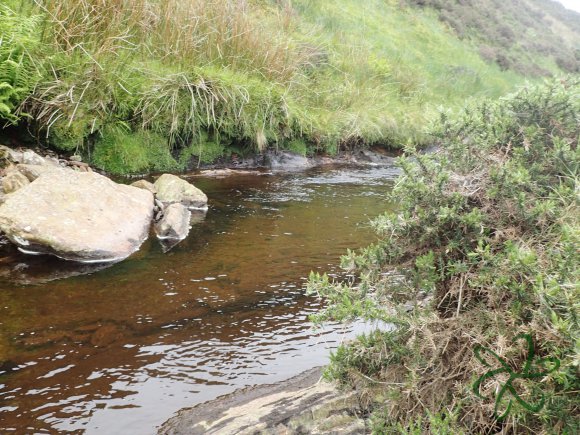
The last pool of the day. I didn't realise it at the time but I was probably only round the bend from where the Awin Rheast joins the Druidale. It's a pity because I'd like to have made that landmark. Still I was already half a mile up stream from where I had started over rough ground. It takes it out on your joints. I'd had a fish attack my fly first cast in this pool. I was determined it was going to be caught. We did the aerial combat thing with my quarry trying to pluck it from the air. We did the, intercept the skating fly. We did the dead drift, rise and ignore it.
In the end I changed to the top row, black, traditional wet and gently pulsed it from the rifle into the pool. the fish grabbed the fly on the first cast and it held.
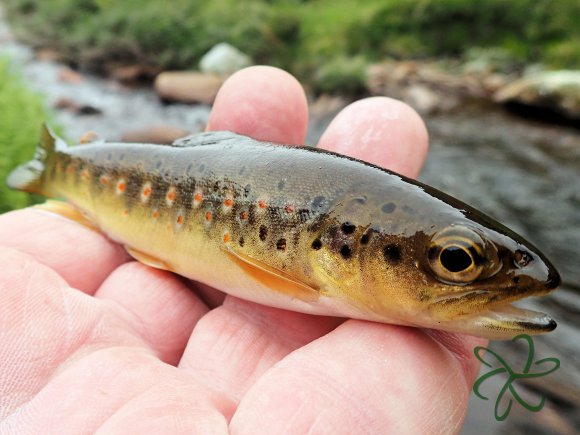
Not huge, maybe 6 inches, but this little fish had been a true adversary. It had tested me and so, I felt, it deserved a proper portrait and remembering. With a smile I turned and walked my way down the sheep tracks back to the car. Druidale is still a special place for me. Next time I'll take the sheep tracks downstream to deep pool where, legend has it, the Fenoderree have been known to cause mischief.
Rating 5.0 (4 votes)
No Comments
Add a comment:
Subscribe to comments
